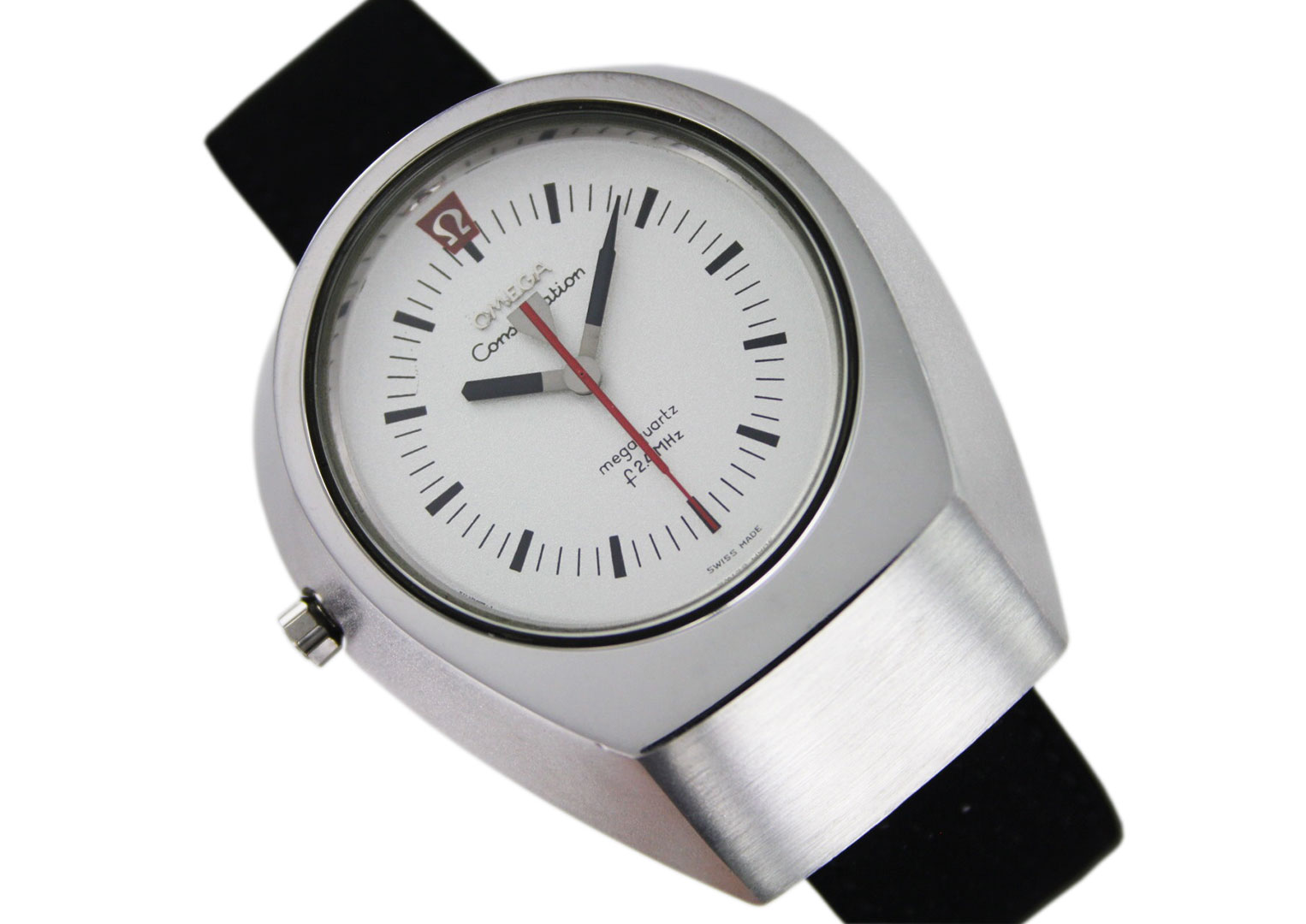Feature: Rolex’s Crazy Dive Watch (And Other Weird Prototypes)
In the never-ending quest to innovate and improve their products, watch brands frequently conjure up bizarre-looking designs that never go further than a sketch pad—or in Gerald Genta’s case, a napkin, beer mat or whatever else was within arms’ reach whenever the great man was struck with inspiration.
And then there are those watches that make the giant leap from the drawing board to the prototype stage, with just one or two being produced to see how they look in the metal, gauge public reaction, perhaps endure a barrage of tests to see if they bear up to scrutiny.
When these prototypes find their way into the wild, the industry goes a bit loopy, especially if the prototype is something that looks like the horological equivalent of one of those crazy concept cars that the likes of Lamborghini like to tease us with every now and again.
Here we pick out a few of our favourite prototype watches from several leading Swiss brands that have cropped up over the years, including the curious AP Royal Oak that never was…
Omega’s ‘Elephant’ Chronometer
This Omega Constellation Marine Chronometer from the early 1970s looks very much of its era: big, shiny, futuristic, and powered by Omega’s MegaQuartz caliber 1500.
Known as the “Elephant” due to its movement having two adjacent cell batteries that looked like elephant ears, it was classified as a Marine chronometer due to its accuracy, but the battery power was rather paltry. Although no records exist of the battery being tested at the time of its release, one model came to market in 2011 and was found to have a 5-week battery-life.

This Omega Constellation prototype from the dawn of the quartz era never went into full production
Later versions of the model, with completely different cases, went into full production, but this version, resembling a cross between a pebble and a flying saucer, got no further than the prototype stage. Only five examples were said to have been made, making it one of the rarest Omegas around.
The Rolex Deepsea Special And Perpetual Calendar
The Rolex Deepsea Special No.3 is a timepiece that could have leapt from the pages of a Jules Verne novel. This weird model with its thick, bubble-shaped glass accompanied explorer Jacques Piccard and US Naval officer Donald Walsh in 1960 when they made their record-breaking descent to the depths of the Mariana Trench.

This museum-quality stainless steel and gold Rolex Deepsea Special sold for CHF1,058,500 at auction in 2021. Image courtesy of Phillips
The watch was attached to the Trieste, a deep-sea submersible known as a bathyscaphe, and reached 10,916m, withstanding enormous pressure to reach the surface unscathed. Another one of those Rolex PR triumphs the brand excels at.
A previous model, the Deepsea Special No.1 had accompanied Jacques and his father Auguste in 1953 to the bottom of the Gulf of Naples and this also returned to the surface in full working order, having been subjected to a pressure of over 600 atmos.
It’s believed that seven prototype Deep Sea Special watches—all very similar—were built by Rolex between 1953 and 1960, and they occasionally come up at auction houses around the world. The one pictured sold at the Geneva Watch Auction presented by the leading auctioneers Phillips in November 2021 for a little over £872,000.
If that kind of price is beyond your budget and you want to see one close-up, check out the one on permanent display in Washington DC’s Smithsonian Institute, alongside the actual Trieste bathyscaphe that made all those deep-sea adventures possible.

A side view of the watch that sold at the Phillips Geneva Watch auction in 2021. Image courtesy of Phillips
Less robust but no less interesting is a rarely spotted Rolex that never left the prototype stage, and of which just a few models exist. During the quartz era, Rolex toyed with the idea of releasing a Perpetual Calendar Oysterquartz and went as far as making around twenty of them.
The unexpected revival of mechanical watches seems to have made the brand shelve the idea, and that was the end of the matter. It remains the only perpetual calendar ever made by Rolex, albeit unofficially.
Interestingly, when one came up for auction in 2004 Rolex demanded the owner return it to them, implying it had been ‘stolen’ from them by a rogue employee. A civil lawsuit followed, with Rolex losing because, among other things, they hadn’t filed a police report in the first place.
No doubt they keep their prototype watches under far stricter conditions these days…
A Tudor Like No Other
Did you know that Tudor’s current Heritage Black Bay PO1 model, with its distinctive case, is inspired by an almost identical prototype made for the US Navy the 1960s?
Released in 2019, the watch is unusual for having a bi-directional bezel that can only be moved when a hinge between the upper set of lugs is raised. When the hinge is down it locks the bezel securely in place. Originally made for divers back when Tudor was the official watch of several navies around the world, it boasts a beefy, spartan military look, although its water-resistance—200 metres—is far from impressive by today’s standards.

The Tudor P01 is based on a prototype model rejected by the US Navy in the 1960s
Brimming with character and with that crown at the 4 o’clock position—like a few Seiko and Sinn models, to name just two—the PO1 is surely a future cult favourite that’s been flying under the radar for far too long. Indeed, it makes you wonder why it was never more than a prototype in the first place.
Who knows! Institutions like the military are pretty tight-lipped about these things.
An Alternative AP Royal Oak
As far as we know, this version of Gerald Genta’s AP Royal Oak for Audemars Piguet never actually made it to the prototype stage but just imagine if it did! The sketch by Genta demonstrates that he toyed with the idea of the now-famous octagonal bezel being rotated slightly, and bearing six screws instead of eight.
Could this drawing have been the inspiration for Hublot, who went on to use six screws on their own port-hole-style bezels?

Not quite the Royal Oak we know and love today, but can you spot the difference?
Anyway, this seemingly minor adjustment changes the feel of it, making it slightly less masculine and robust.
What do you think, did Genta do the right thing, or should he have gone with the six screws for this now-iconic Audemars Piguet watch? Had he done so, the entire luxury steel sports watch landscape could look like a very different place.
Looking for a dive watch? Click here to shop now
Looking for a pre-owned Tudor watch? Click here to shop now
Looking for a pre-owned Omega watch? Click here to shop now
Looking for a pre-owned Rolex watch? Click here to shop now
Looking for a pre-owned Audemars Piguet watch? Click here to shop now




